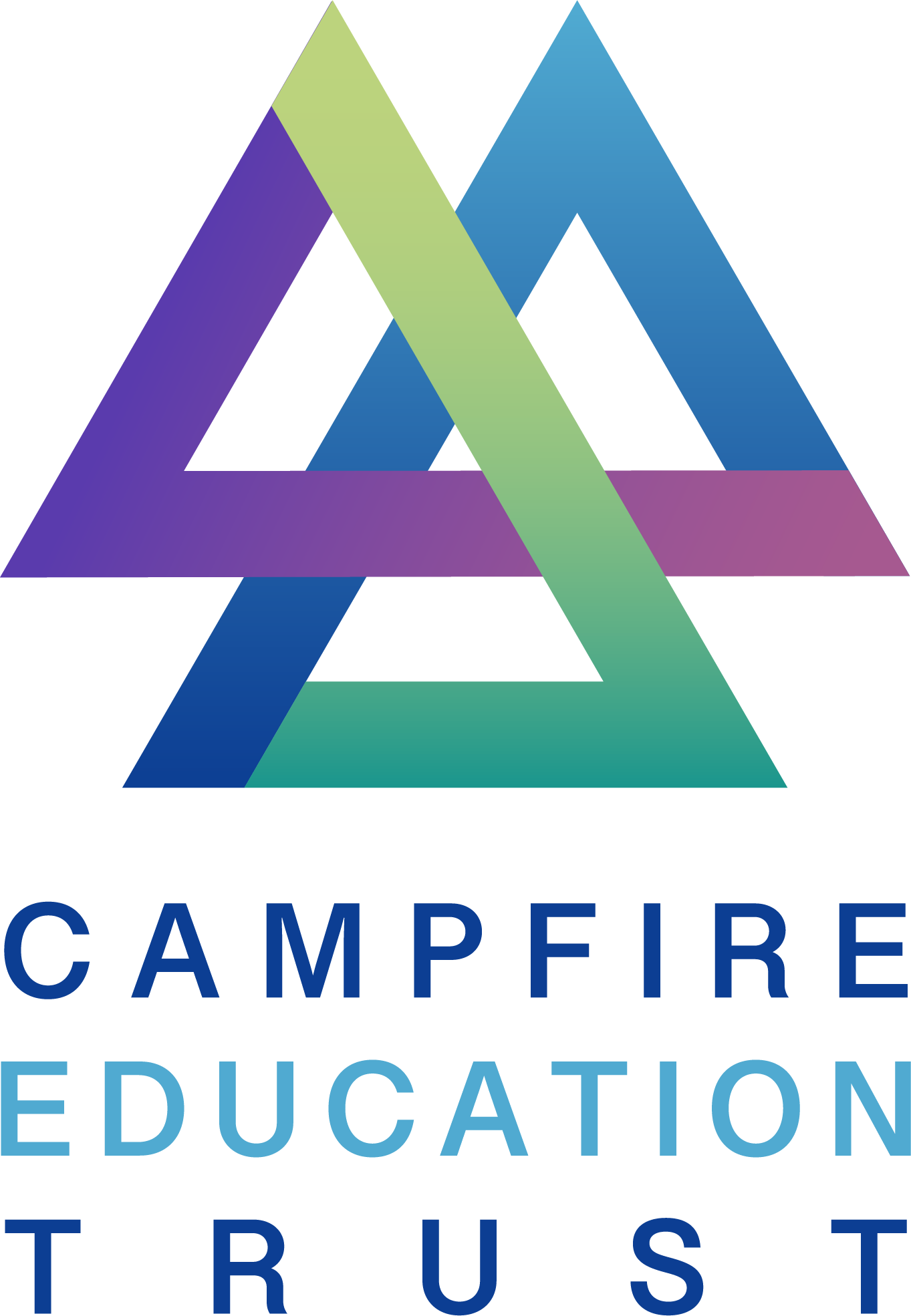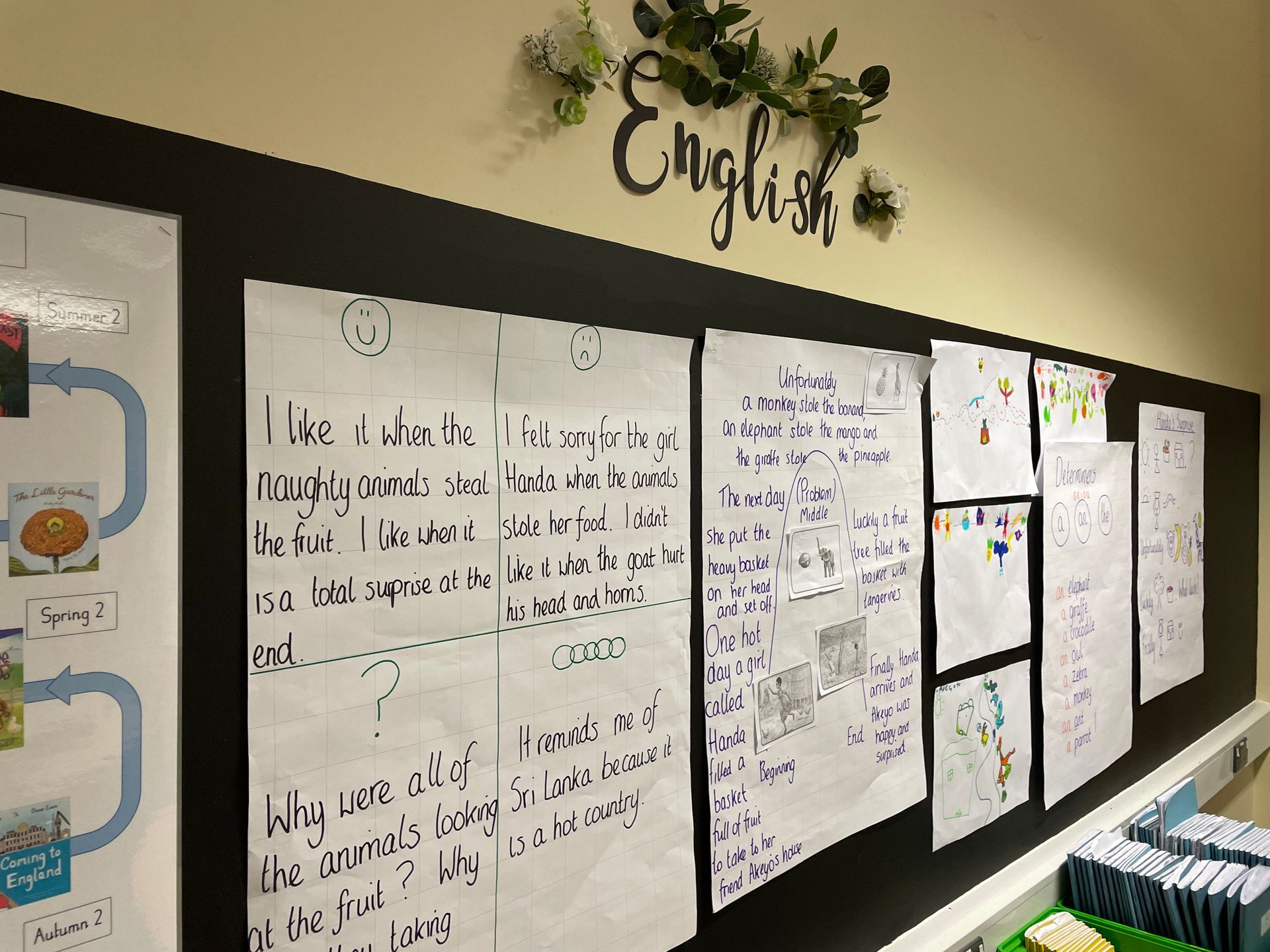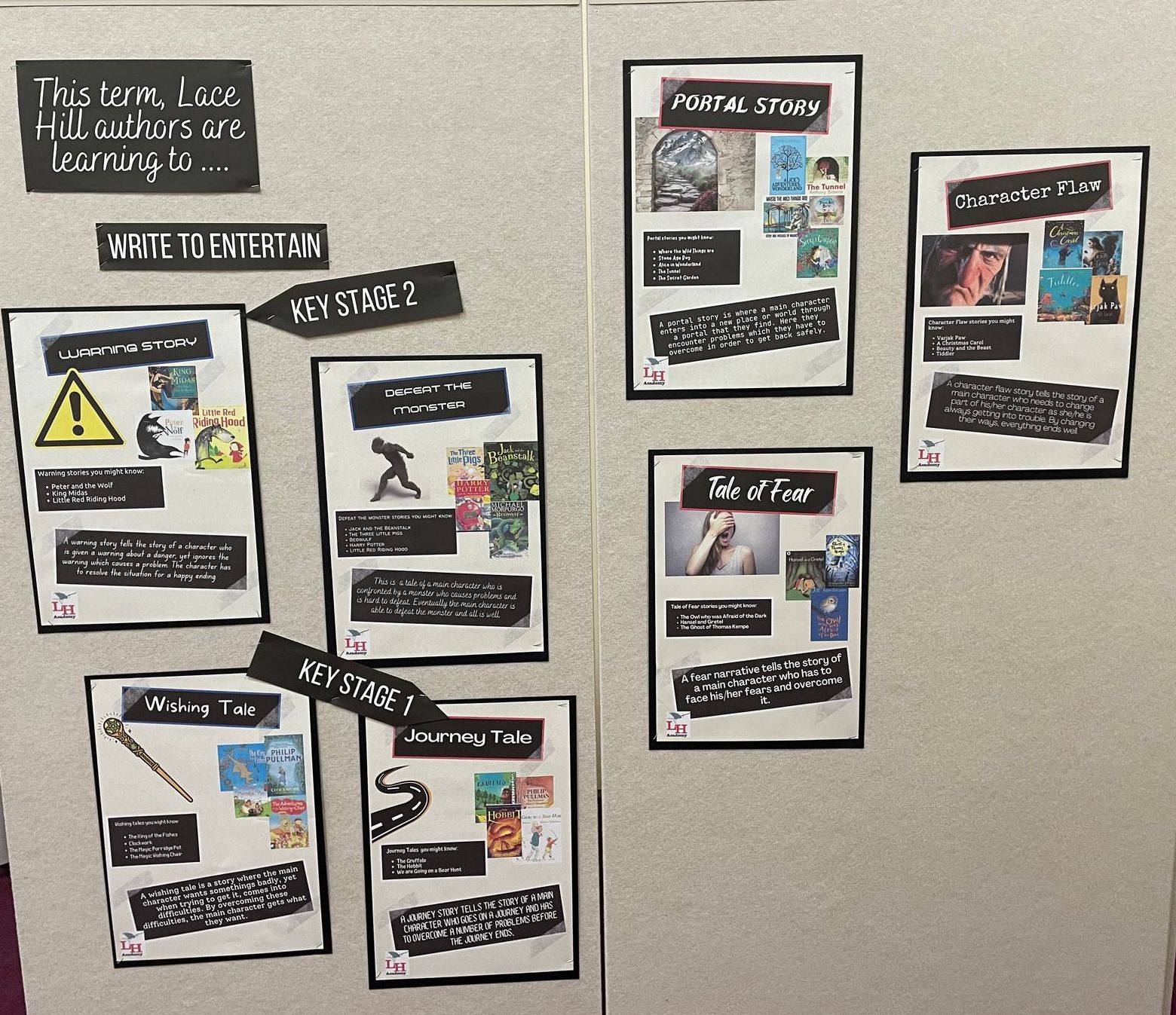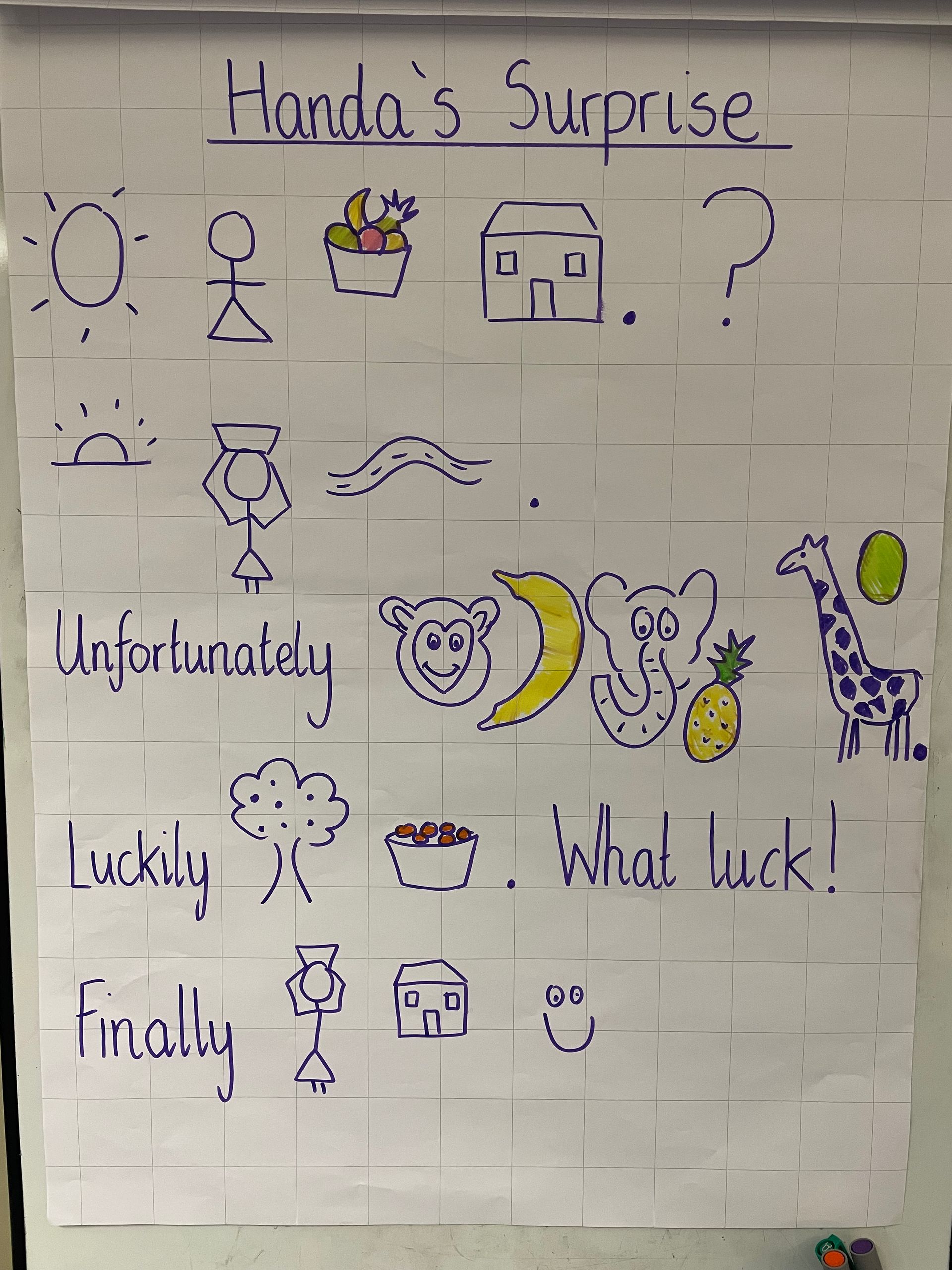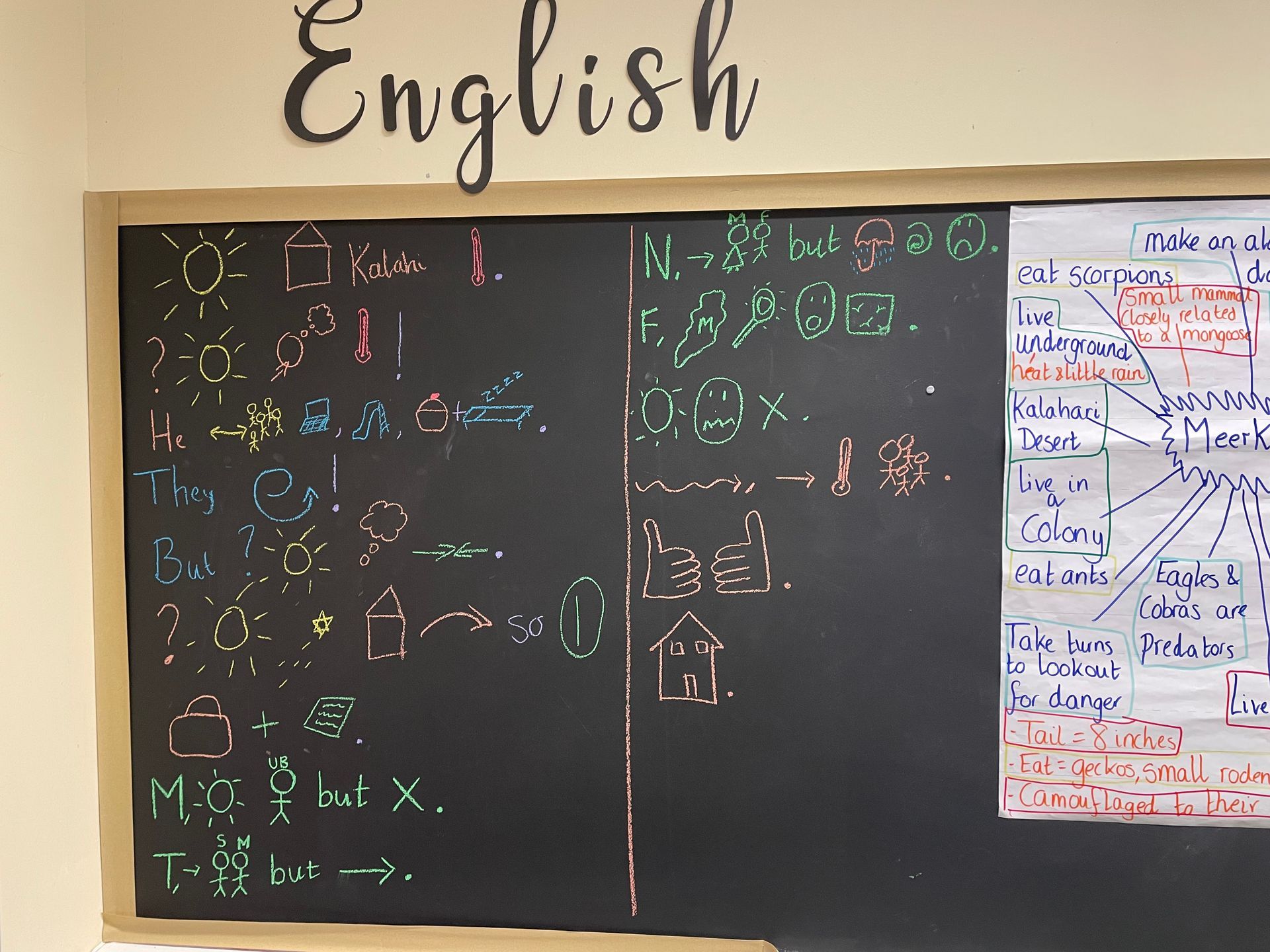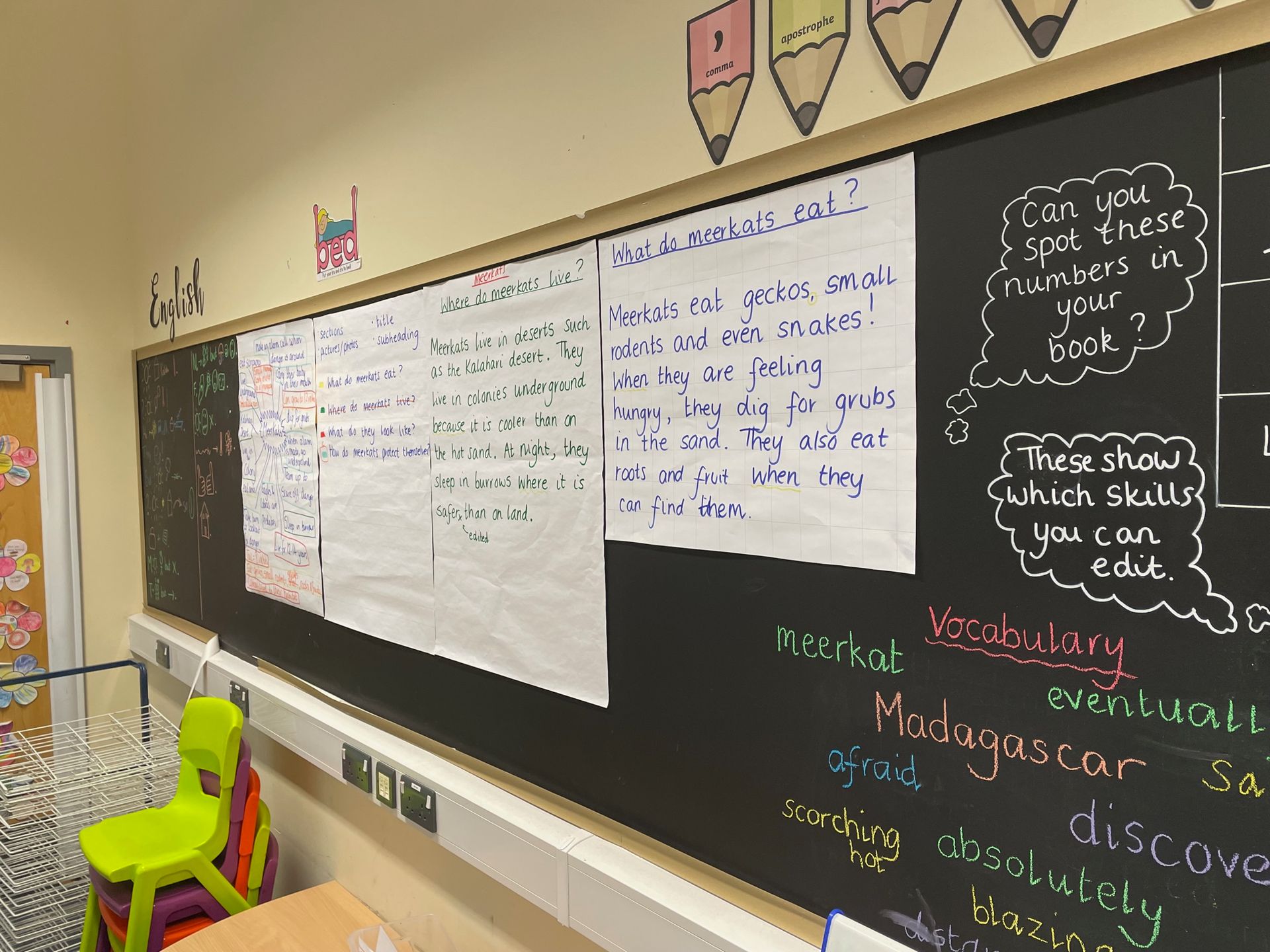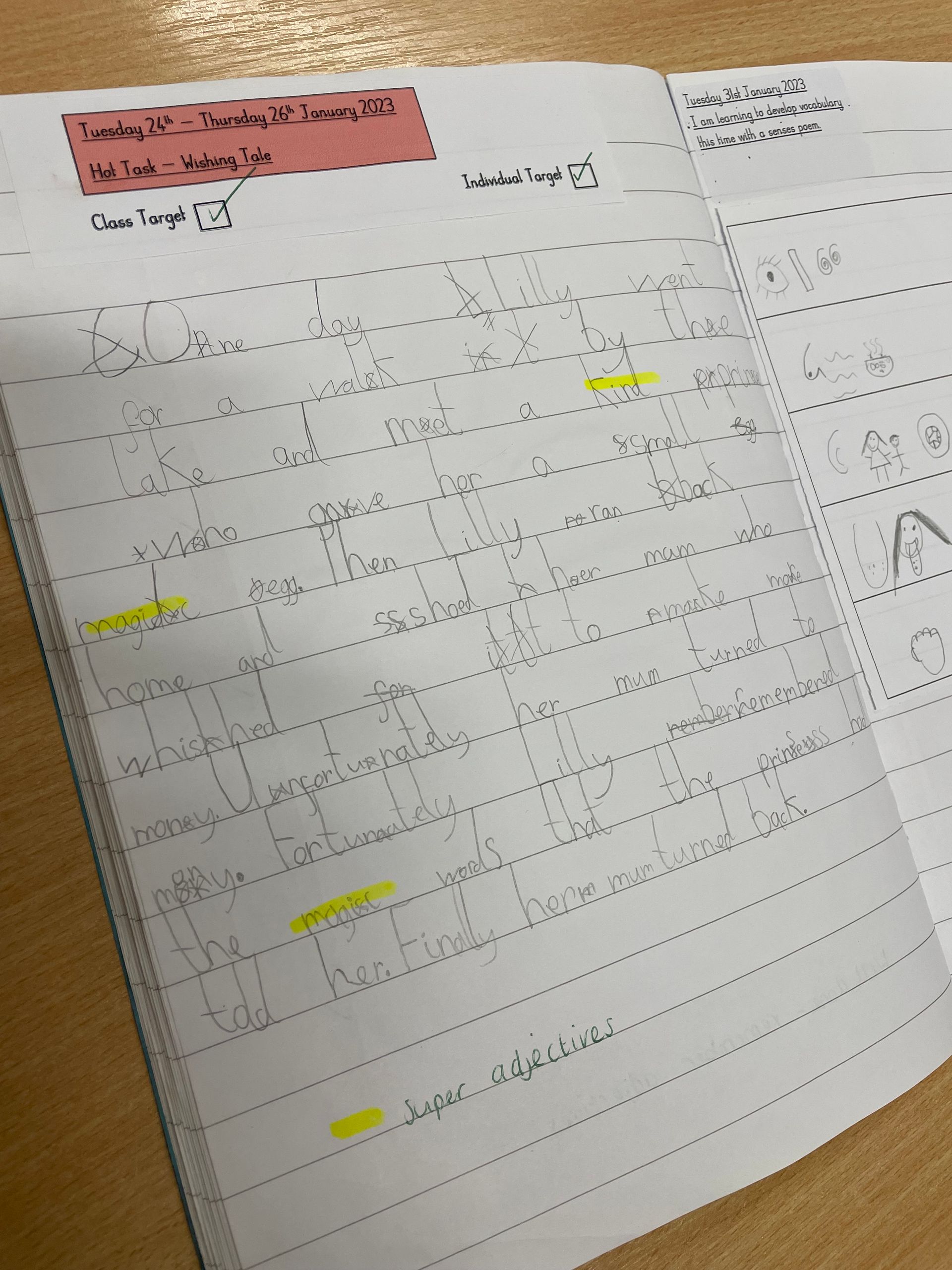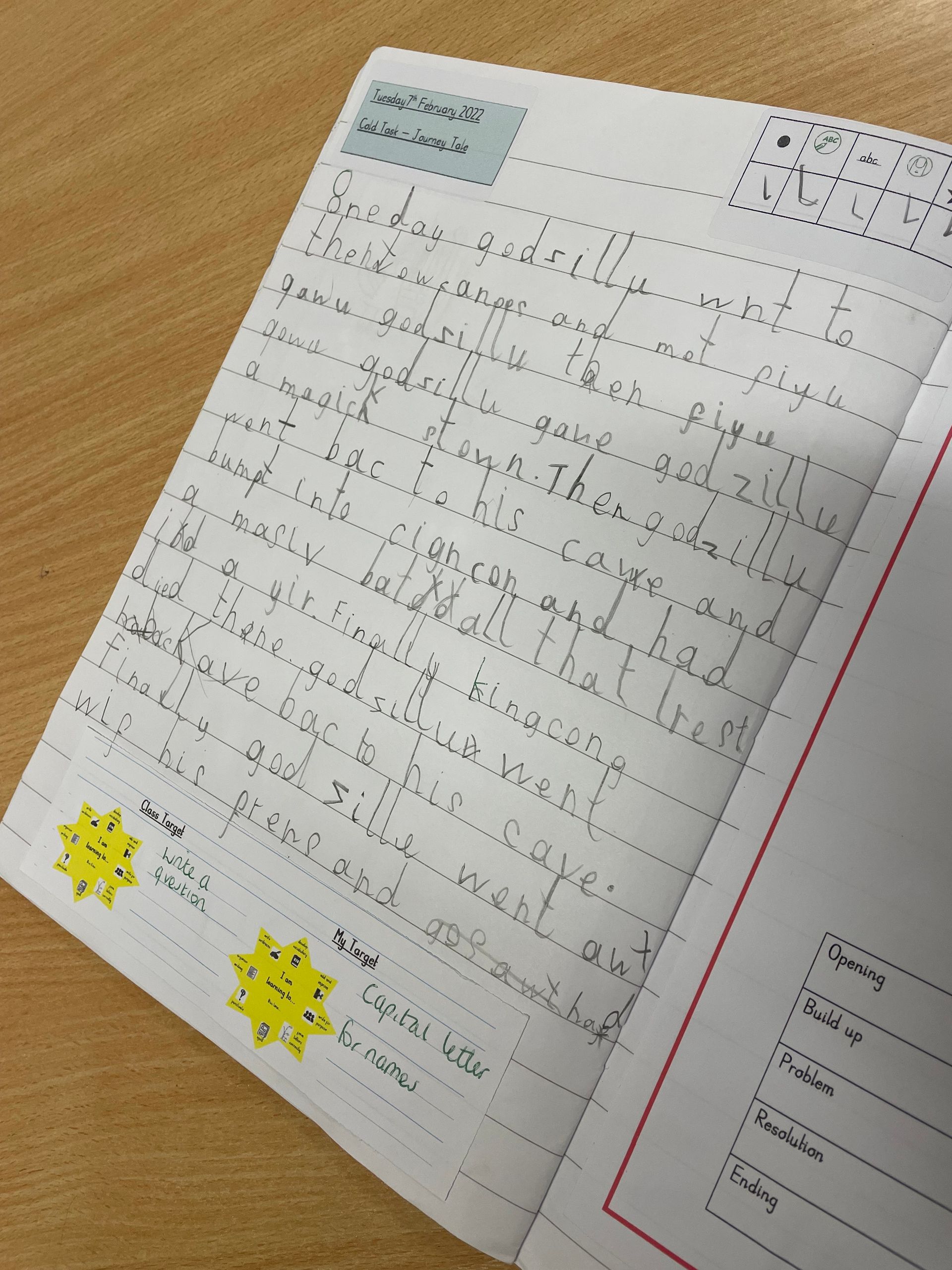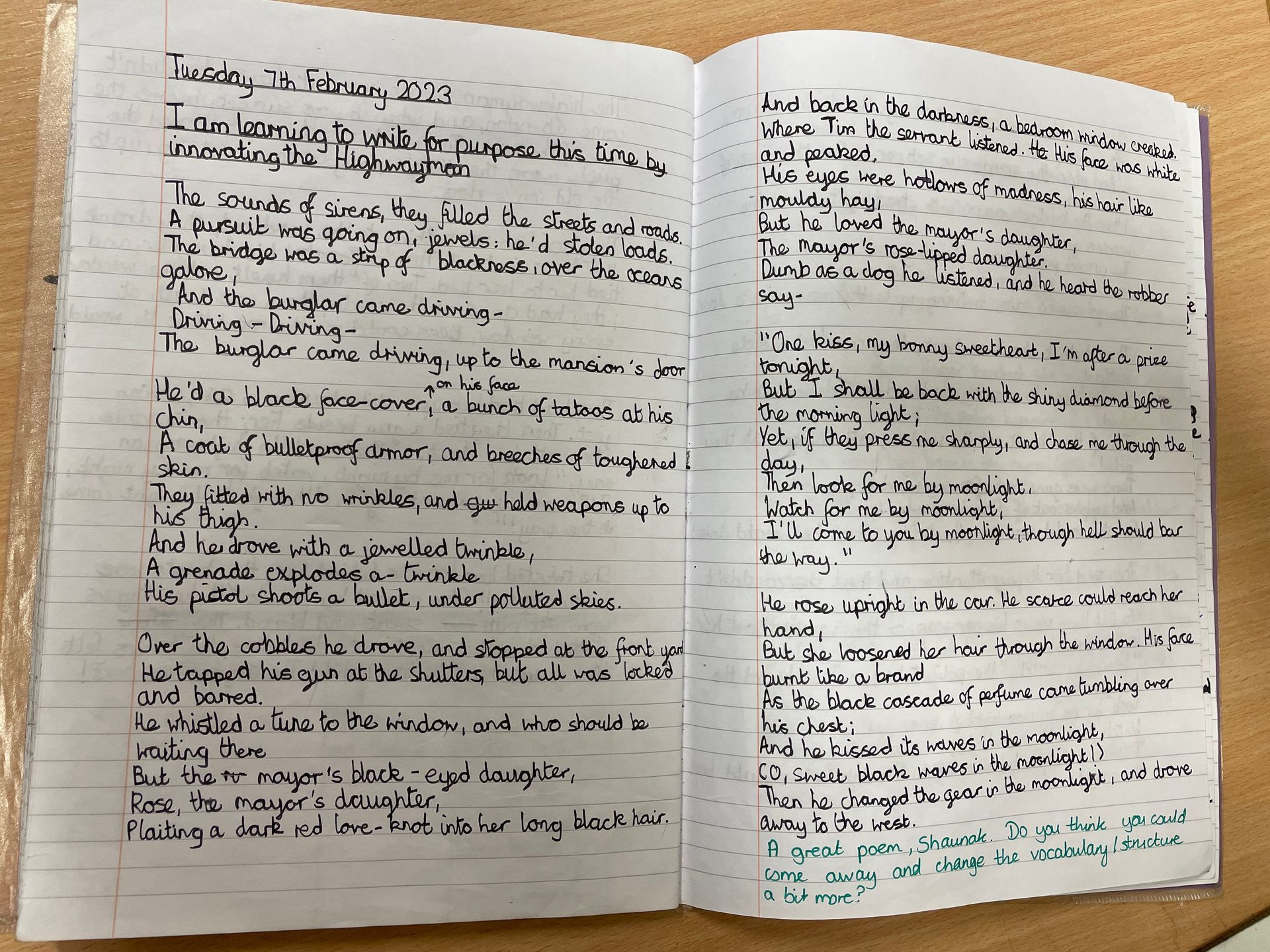Fiction at Lace Hill Academy
Writing to Entertain
The children encounter seven generic story plots throughout the writing curriculum:
Defeat the Monster Story – A defeat the monster story tells the tale of a main character who is confronted by a monster wo causes problems and is hard to defeat. Eventually the main character is able to defeat the monster and all is well.
Tale of Fear: A fear narrative tells the story of a main character who has to face his/her fears and overcome it.
Journey Tale: A journey story tells the story of a main character who goes on a journey and has to overcome a number of problems before the journey ends.
Warning Story: A warning story tells the story of a character who is given a warning about a danger, yet ignores the warning which causes a problem. The character has to resolve the situation for a happy ending.
Portal Story: A portal story is where a main character enters into a new place or world through a portal that they find. Here they encounter problems which they have to overcome in order to get back safely.
Wishing Tale: A wishing tale is a story where the main character wants somethings badly, yet when trying to get it, comes into difficulties. By overcoming these difficulties, the main character gets what they want.
Character Flaw: A character flaw story tells the story of a main character who needs to change part of his/her character as they are always getting into trouble. By changing their ways, everything ends well.
Non-Fiction at Lace Hill Academy
Children learn to...
Write to persuade: Writing to convince the reader that what they are saying is true.
Write to discuss: Writing different points of view on an issue, providing balanced arguments for and against.
Write to recount: Writing in chronological order about an event that has happened.
Write to inform: Giving the reader information about a chosen topic.
Write to instruct: Writing a set of instructions explaining how to carry out/complete a task.
Write to explain: Writing an explanation so that the reader understands how or why something is done.
Poetry
Children encounter a wide variety of poem structures through their fiction units.


